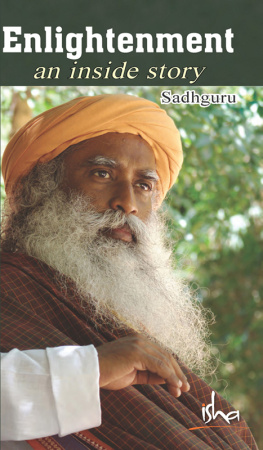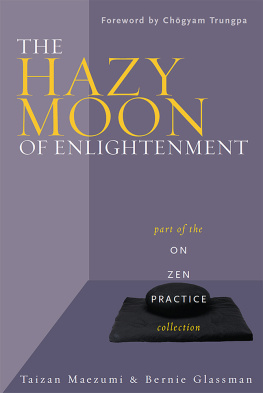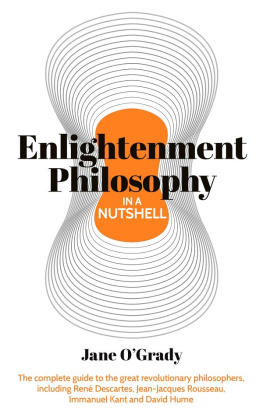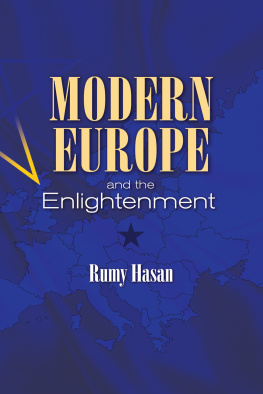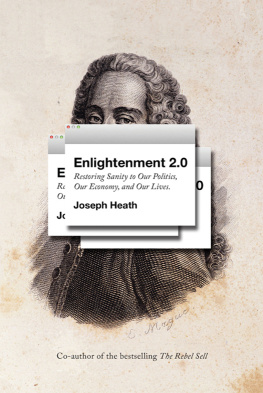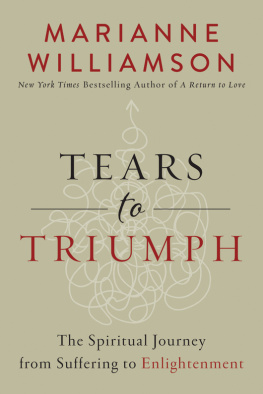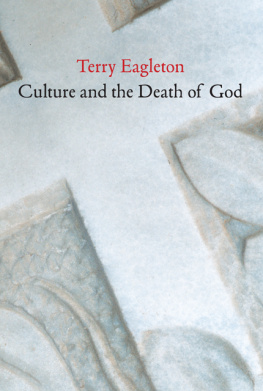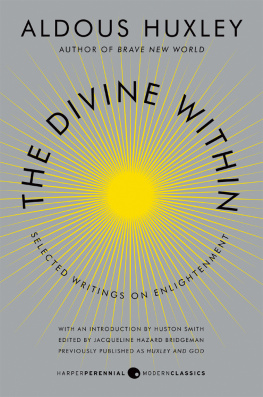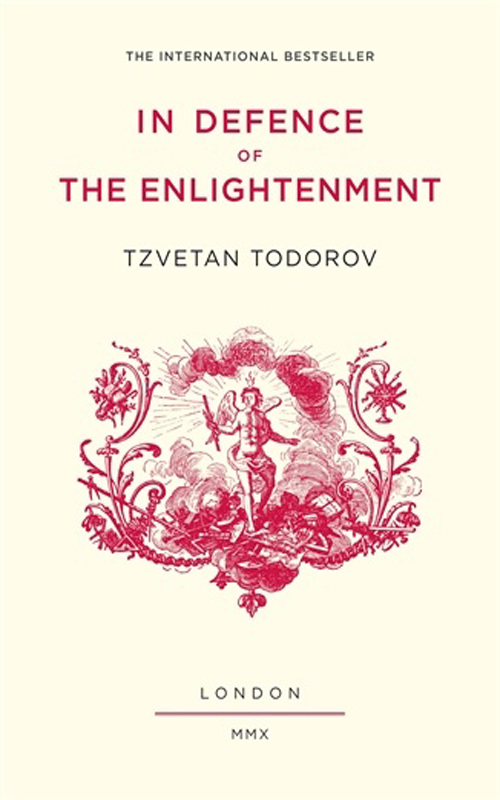A FTER THE DEATH OF GOD AND THE COLLAPSE of utopias, on what intellectual and moral base do we want to build our communal life? If we are to conduct ourselves as responsible human beings, then we need a conceptual framework that underpins not only our statements that is easy but also our acts. Seeking just such a framework is what led me to a current of thought and sensibility that I will describe as the humanist dimension of the Enlightenment. The great upheaval that took place in the three-quarters of a century prior to 1789 is responsible more than anything else for our present-day identity. For the first time in history, human beings decided to take their destiny into their own hands and to set the welfare of humanity as the ultimate goal of their acts. This movement emanated from the whole of Europe, not just from one country alone, and it found expression in philosophy and in politics, in the sciences and in the arts, in novels and in autobiographies.
Clearly, a simple return to the past is neither possible nor desirable. The writers of the eighteenth century cannot resolve the problems that have arisen since and that are tearing apart our world every day. But a better understanding of this radical upheaval may help us live better today. And so I set out here to outline the key points of Enlightenment thought, without losing sight of our times, in a continual back-and-forth movement between past and present.

I T IS NOT EASY TO DEFINE EXACTLY WHAT THE Enlightenment project consisted in for two reasons. First, the Enlightenment was a period of culmination, recapitulation and synthesis, not one of radical innovation. The great ideas of the Enlightenment did not originate in the eighteenth century. Those that did not derive from Antiquity bear the traces of the High Middle Ages, the Renaissance and the classic era. The Enlightenment absorbed and articulated opinions that were in conflict until then, whence the need, as many historians have noted, to do away with certain commonplace images of it. The Enlightenment was at once rationalist and empiricist, heir to Descartes and to Locke, receptive to the Ancients and to the Moderns, to the universalists and to the particularists, enamoured with history and eternity, details and abstractions, nature and art, freedom and equality. The ingredients were ancient but their combination was new. During the Age of Enlightenment, not only were these ingredients brought together to form a whole but, more essentially still, they were taken out of books and applied to the real world.
The second difficulty resides in the fact that Enlightenment thinking was formulated by a great many individuals who, far from agreeing with one another, were constantly engaged in bitter discussions, from one country to another and within each country. The time that has elapsed since has allowed us to put things in perspective but only to a certain point: some of those disagreements gave rise to schools of thought that are still in conflict today. The Enlightenment was an era of debate rather than consensus. Yet although the multiplicity of thought was considerable, we can recognize without too much difficulty what can be called an Enlightenment project.
Three ideas are found at the basis of this project, which produce countless consequences of their own: autonomy; the human end purpose of our acts; and universality. What is to be understood by these ideas?
The first constitutive characteristic of Enlightenment thinking consists in giving priority to what individuals decide for themselves over what is imposed upon them by an external authority. This preference comprises two facets, one critical, the other constructive: it is necessary, on the one hand, to be free from external authorities and, on the other, to be guided by laws, norms and rules decided by the very people to whom they are addressed. Emancipation and autonomy are the words that designate these two equally indispensable phases of a single process. To engage in it, one must have total freedom to examine, question, criticize and challenge dogmas and institutions: none can be regarded as sacred. An indirect but decisive consequence of this preference is the restriction as to the character of authority: it must be on the same dimension as human beings, meaning it must be natural not super-natural. This is the sense in which the Enlightenment produced a disenchanted world, obeying the same physical laws overall and, insofar as human societies were concerned, revealing the same mechanisms of behaviour.
Before the Enlightenment human beings lived, most of the time, under an authority that was religious in nature. Its origin was therefore both anterior to society (we speak, in this case, of heteronomy) and supernatural. Indeed, religion was the greatest target of Enlightenment criticism, the aim of which was to allow human beings to control their own destiny. However, this criticism was selectively directed. What was rejected was the submission of society and individuals to precepts whose sole legitimacy came from the fact that a tradition attributed them to gods or to ancestors; the lives of human beings were to be guided henceforth by a project for the future, not by an authority from the past. Nothing was said, on the other hand, about the religious experience per se, or about the idea of transcendence, or about any of the various moral doctrines propounded by particular religions. The criticism was aimed at the structure of society, not the content of beliefs. Religion was withdrawn from the realm of the state but not from the lives of individuals. The majority of Enlightenment thinkers identified not so much with atheism as with natural religion or deism, or one of the many variations thereof. When they undertook to observe and describe the beliefs of people around the world, they did so with the intent not of challenging religion but of fostering an attitude of tolerance and defending freedom of conscience.


